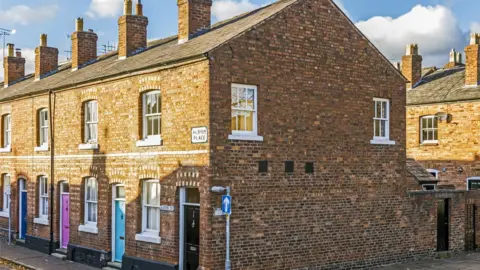Reality Check: How are English councils spending your taxes?
 Getty Images
Getty ImagesMost local authorities in England are planning to increase their council tax this year, to pay for local services.
Councils in England receive their money from:
- council tax
- taxes paid by local businesses
- grants from central government
- rent from social housing
- fees and charges (parking for example)
Schools, most of policing budgets and public health are funded by separate pots of money from central government. These are administered by councils, but they don't have much discretion over how they spend them.
But council tax makes up the biggest chunk of money which councils have some freedom over how they spend.
And this, along with business rates - a tax that businesses have to pay on their properties - and a few small grants from central government, has to pay for everything else, from libraries to bin collection to caring for vulnerable children.
Councils give their business rates to the Treasury which keeps half and returns the other half to councils in the form of the Revenue Support Grant. They are then free to spend this money as they see fit.
They also receive a few other small grants, some of which are paid for by the half of their business rates that the Treasury hangs onto.
This week, local government's financial settlement for the year ahead was announced - but to see how the money is actually spent, we have to look at this year's figures.
In 2017-18, English councils' core budgets totalled about £44bn - of which about £25bn came from council tax and £17bn from a combination of local business rates and the Revenue Support Grant.
Here's how it was spent:
- Adult social care (£15.6bn)
- Children's social care (£8bn)
- Environmental services including waste collection, recycling and street maintenance, cremation and burials, crime reduction and community safety (£5bn)
- Transport and highways (£4.2bn)
- Central services including courts (£3bn)
- Cultural services like libraries (£2.2bn)
- Fire services (£2.1bn)
- Some elements of housing (£1.5bn)
- Planning and development (£1.1bn)
 Getty Images
Getty ImagesThe Revenue Support Grant - the money from central government which is not ring-fenced to spent for any specific purpose - has fallen dramatically over the past few years.
Eventually it will be phased out altogether.
As councils receive less money from central government, they rely more on the money they are able to raise through council taxes - but this varies around the country.
Areas with less well off populations have fewer people paying council tax and generally lower tax rates, meaning they are less able to raise money this way.
Can councils raise more?
In 2015, government announced councils would soon be able to keep 100% of their business rates - something which is currently being piloted.
This is welcomed by some who see it as a way of giving councils more freedom and a stronger incentive to grow their local economy.
But critics say this would be a regressive move, since poorer areas are both less able to raise money through business rates and often have higher needs, making delivering services to their local populations more expensive.
For example, areas with poorer populations will have more elderly people who require council-funded social care.
In 2015, many councils were also given the power to levy a 2% council tax precept, ring-fenced to be spent on adult social care, every year for three years without having to go to a vote.
The next year this was adjusted so councils could raise tax by an extra 3% for two years, meaning they could bring the extra money in more quickly.
